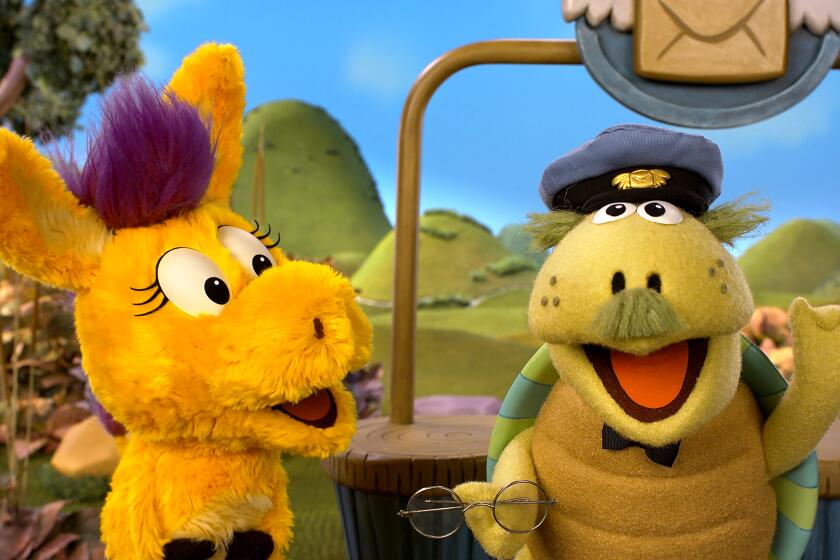‘Donkey Hodie’ returns with a new but familiar friend from Mister Rogers’ world: Trolley
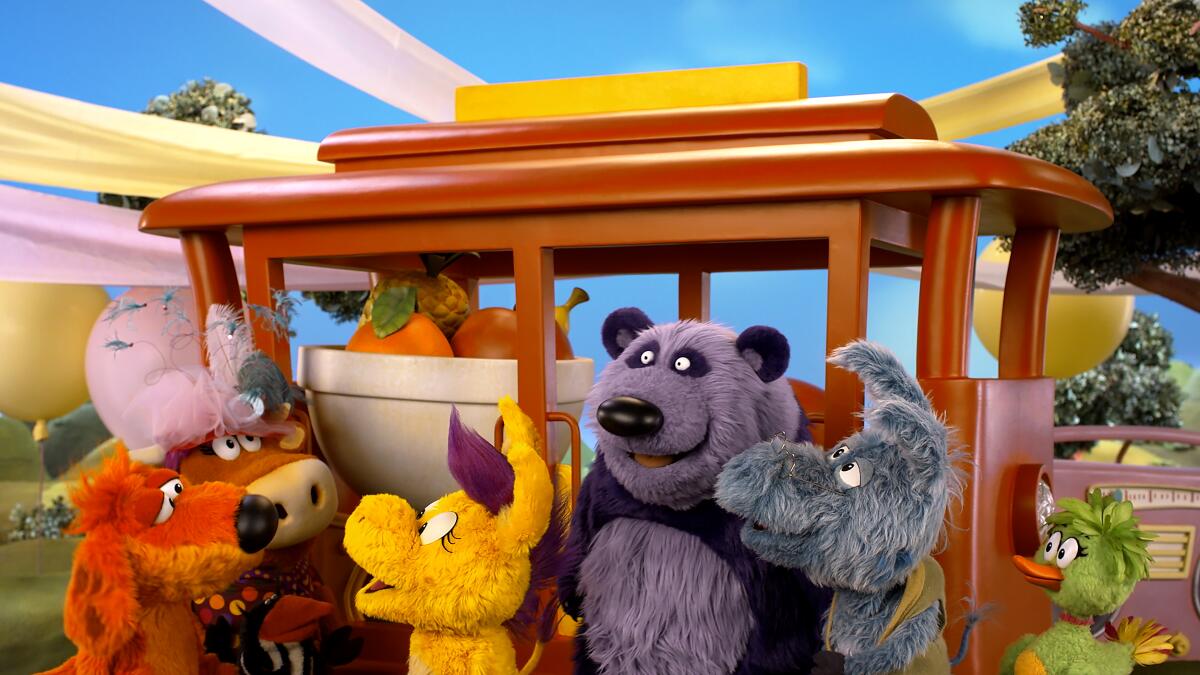
Memories from our childhood are an interesting thing. Often we remember a sound, an image or a feeling. The memory embraces us and transports us back to another time.
Can a TV show stir visceral memories like that? When the PBS children’s series “Donkey Hodie” returns for a second season on Aug. 14, it’s going to try. The puppet-based series, which streams on PBS Kids and is broadcast on PBS affiliates, is a joint production of Fred Rogers Productions and Spiffy Pictures, and it follows the charming adventures of Donkey Hodie (played by puppeteer Haley Jenkins) and her best friends, Purple Panda (Frankie Cordero), Bob Dog (David Rudman) and Duck Duck (Stephanie D’Abruzzo). Donkey Hodie lives in the land of Someplace Else and is the granddaughter of the original Donkey Hodie from “Mister Rogers’ Neighborhood,” the groundbreaking children’s series that ran from 1968 to 2001.
“‘Donkey Hodie’ is inspired by the quirky and funny side of Fred Rogers,” says Kristin DiQuollo, the show’s supervising producer.
This season, the residents of Someplace Else will be joined by a very familiar and beloved character. With a distinctive ding-ding and a flashing headlight, Trolley, who was an indelible part of “Mister Rogers’ Neighborhood” and its Neighborhood of Make-Believe, comes to Someplace Else.

“This is the first time Trolley has been realized as a full-scale vehicle that characters are riding on in a live-action way,” says DiQuollo. “Trolley is a pal. Trolley is a helper. Trolley is a neighbor. Imagine having a friend who is a vehicle and you can interact with that friend and go on adventures with that friend and that friend can take you to special places you haven’t been before.”
Production designer Justin Vandenberg thought back to his childhood when he began creating Trolley. “I grew up with ‘Mister Rogers’ Neighborhood’ as a big part of my morning routine,” he says. “So my first step was to draw Trolley straight from memory. We’re translating an iconic image and making it fit our world.”
The PBS series is chock full of homages to the groundbreaking and beloved children’s television series. Here’s a list of the show’s Easter eggs.
So although Vandenberg referenced old photos and show footage of Trolley, it was more important that Trolley evoke the memory of the original rather than be precisely accurate. “We focus on the iconography of the object,” he says. “Trolley had to be familiar. We must know that that’s Trolley the moment we see Trolley. The approach is always to make things new and exciting yet familiar.”
Vandenberg, who also designed a miniature, finger-puppet-size Trolley used for long shots, describes a construction that is much like a surfboard, foam covered with fiberglass. The seats and floorboards can come in and out so that cameras can go inside and Trolley can be shot from different angles to make room for the puppets. Trolley sits on foam blocks to help it achieve its playful movements.
Sourcing things like the correct wheels that would make it appear that Trolley is seamlessly traveling down Someplace Else’s cobblestone path took time, as did finding the exact red for Trolley’s iconic color. “The color was one thing we were not willing to bend on,” Vandenberg says. “What I tried to do is soften the edges. We use the term wonk, making things wonky, perfectly imperfect, bubbly.”
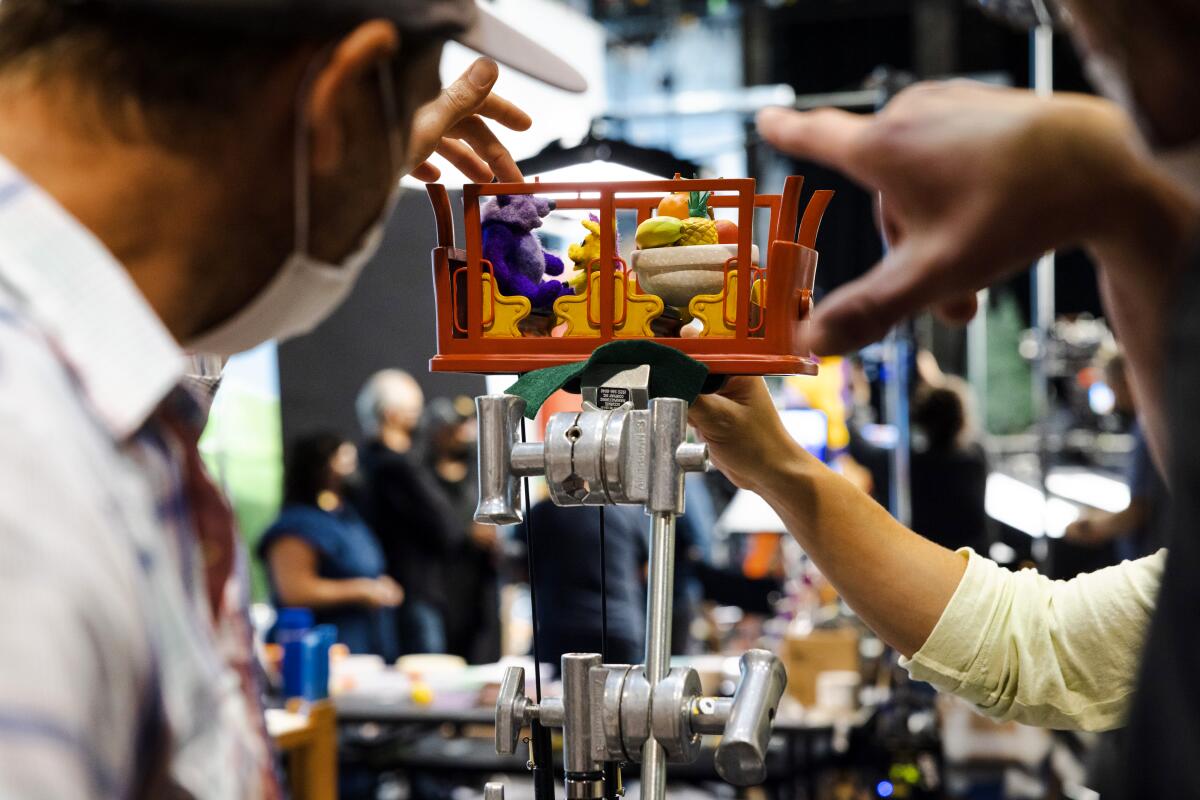
Perhaps most impressive is the fact that Trolley will sound exactly like the Trolley you heard as a child. The production team visited the Fred Rogers Institute in Latrobe, Penn., which is home to the original celeste, a piano-like instrument, used to make Trolley’s unique dings. L.A.-based Cinesamples traveled to Latrobe and recorded every key of the celeste in many different ways to create a digital version of it that is now used in the series.
Each episode of “Donkey Hodie” offers up important lessons — whether it’s learning from your mistakes, dealing with frustration or the importance of a bedtime routine — all of which are gently embedded in the show’s humor and the characters’ delightful high jinks. “We are a show about big feelings, achieving big things, how to manage emotions and being resilient,” DiQuollo says.
Seeing Trolley again will be a trip down memory lane for those who grew up watching and loving “Mister Rogers’ Neighborhood,” and Trolley will offer much for the show’s preschool demographic. One of the first lessons Trolley will teach its young viewers is learning how to communicate with someone who doesn’t communicate the same way you do. “Donkey and Panda’s first time meeting Trolley, they realize Trolley uses dings to speak and they need to figure out what Trolley’s dings mean,” says DiQuollo. “It’s an opportunity for us to tell a story about how we can say the same thing in different ways.”
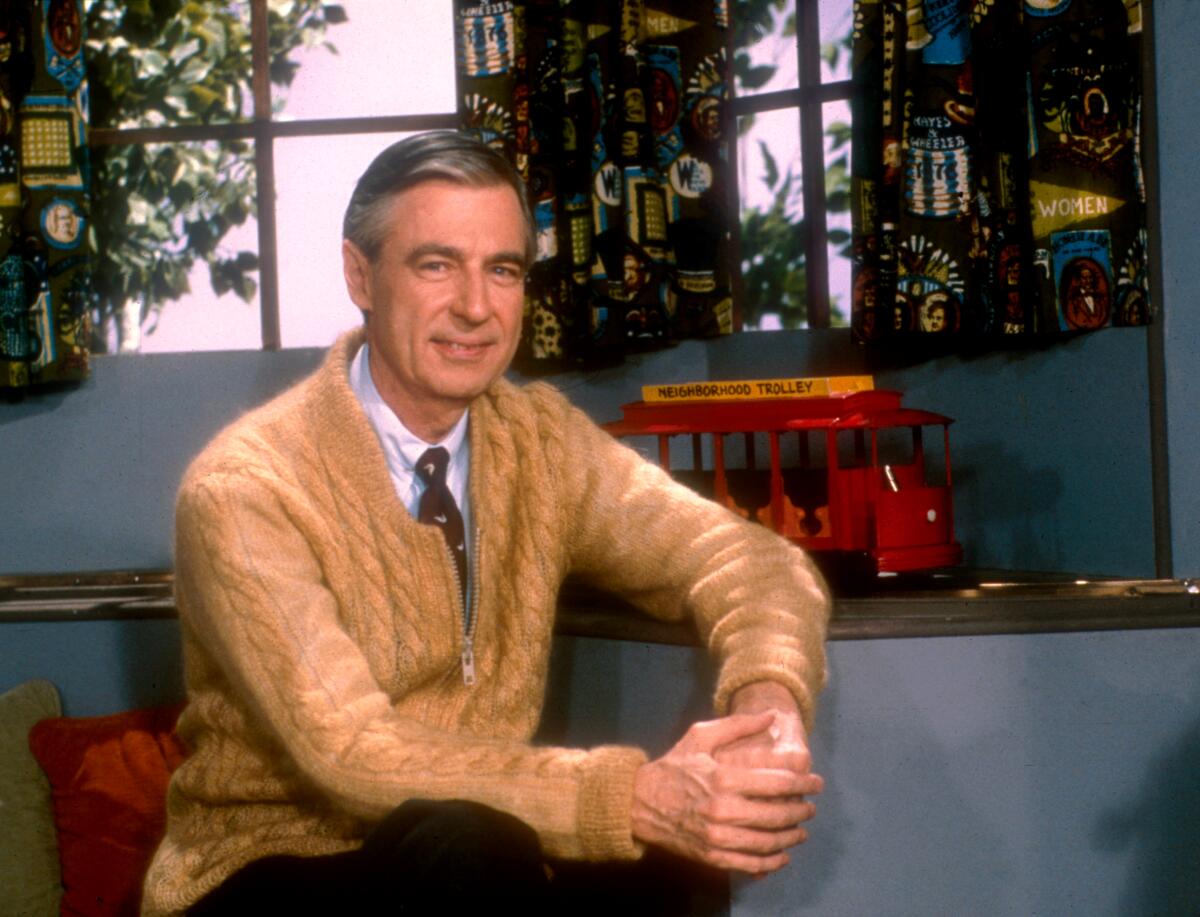
It’s all part of modeling behavior, says educational consultant Natascha Crandall, who advises the series. “Children are very egocentric,” she says. “They think the whole world revolves around them and, in many ways, it really does. If they grow up to continually think that way, we recognize that problems exist. When we think we are the only way and everyone needs to accommodate to us, we get a very closed mind-set and a closed point of view. We are trying to model for children everywhere how to approach someone who is different from them.”
That lesson has become even more imperative in a post-pandemic world, says Ellen Doherty, chief creative officer and executive producer of “Donkey Hodie.” “In general, meeting someone who is not in your everyday can be challenging for young children,” she says. “Especially coming out of the last three years, kids have had their worlds shrink since 2020. Telling stories is how we learn. Kids repeat the things that they learn because their brains are working all the time.”
Much like the PBS animated series “Daniel Tiger’s Neighborhood,” which follows the adventures of the son of Daniel Striped Tiger in the Neighborhood of Make-Believe, “Donkey Hodie” is steeped in the legacy of Fred Rogers. Everyone involved describes continuing the work of Rogers, a true pioneer in children’s TV, as an honor and says that it helps to remember that despite his indelible contribution to the medium, Rogers was a regular person.
“Fred, he was just this person who was funny and goofy in the office and had a real passion and had real ideas,” says Doherty. “There’s a picture in our office of Fred while he’s working with his glasses on and he’s got his papers and he’s clearly in edit mode. He’s reading and looking and evaluating. There was Mr. Rogers who I knew from TV but Fred Rogers, the human, was a person who said, ‘I want to make TV for kids. I think there’s a way to do something that would be good and helpful.’”
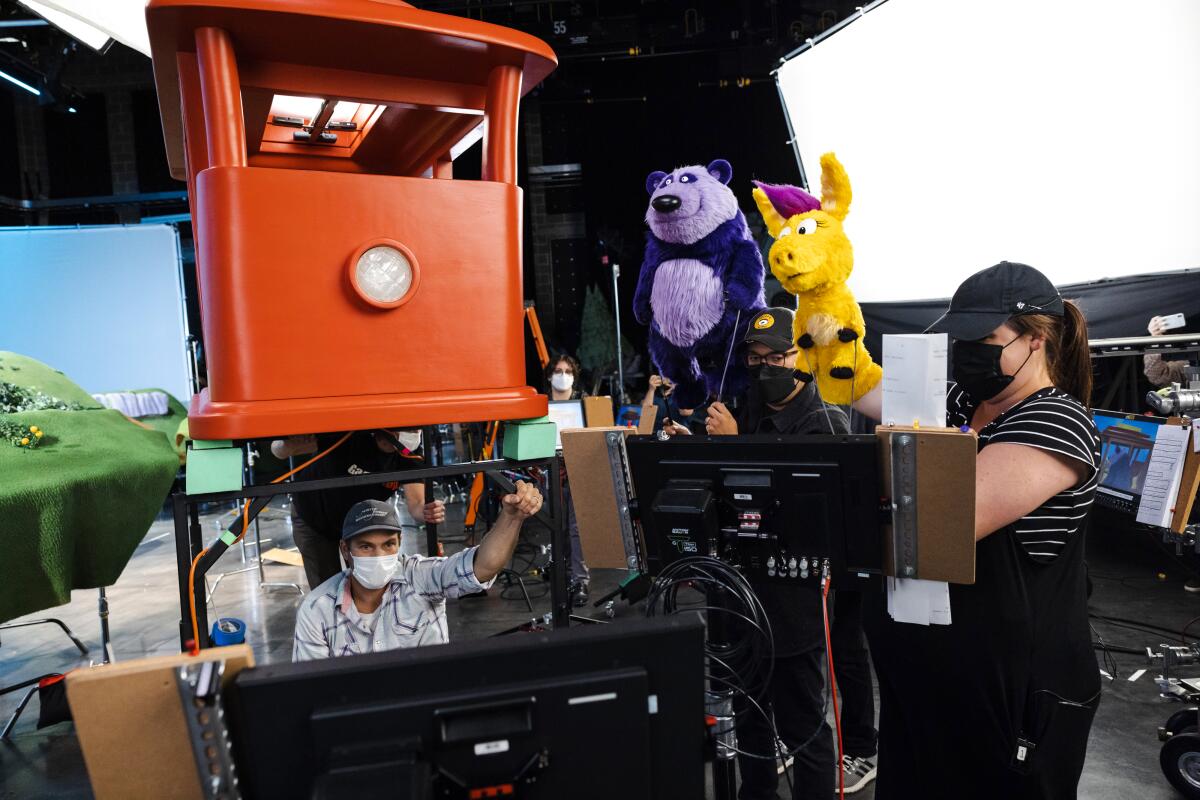
For the record:
10:13 a.m. Aug. 7, 2023Spiffy Pictures’ Adam Rudman was misidentified as Alan Rudman.
David Rudman and Adam Rudman, who are the brothers behind Spiffy Pictures, say creating and producing the show has helped them remember how silly and fun the original “Mister Rogers’ Neighborhood” was.
“We have an enormous amount of respect and admiration for Fred Rogers,” says David Rudman, who in addition to playing Grampy Hodie and Bob Dog on the series is also the puppeteer behind Cookie Monster. “We approach this show differently than we approach other shows that we’ve done. We want this to be a little softer than our other shows. There’s a lot of physical humor, action and comedy in the show. We wanted it to feel easy to watch and not a lot of quick cuts because we know that’s something he would have wanted and it was important to him.”
Jenkins, who brings the title character to life, loves to go back to old episodes of “Mister Rogers’ Neighborhood” and be inspired. “The coolest part has been getting to ride Trolley. It’s really incredibly surreal to be able to go inside something that we’ve all looked at on our TVs since we were little.”
More to Read
The complete guide to home viewing
Get Screen Gab for everything about the TV shows and streaming movies everyone’s talking about.
You may occasionally receive promotional content from the Los Angeles Times.
